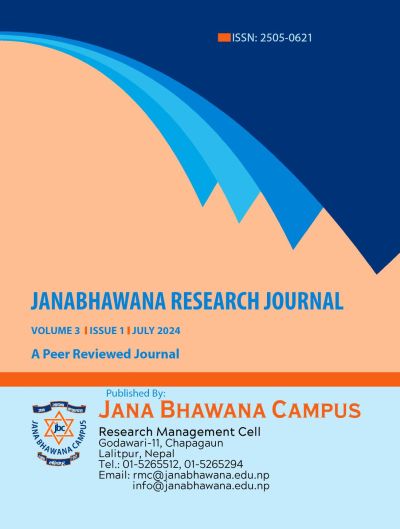Reshaping Multiculturalism through Accommodation, Encouragement and Respect: An Analytical Study of Zadie Smith’s White Teeth
DOI:
https://doi.org/10.3126/jrj.v3i1.68392Keywords:
multiculturalism, multicultural ethos, toleration, assimilation, authentic selfAbstract
Multiculturalism is the idea of distinct identities. It seeks cultural groups to be differently acknowledged, preserved, and supported in society. Zadie Smith’s White Teeth tells the story of subtle racial tensions in contemporary British society. These tensions are reflected in several ways: race, gender, ethnicity, religion, generation, citizenship, and immigrant status. In particular, immigrants face an identity crisis and do not find favorable circumstances to establish their values. There is a gap in understanding between families of different racial identities and even within a family. Smith tries to fill these tensions and multiple levels of gaps orienting the characters to the ideals of racial harmony and mutual understanding. The objective of the study is to reshape multiculturalism applying the theoretical concepts of Chris Barker and Conrad William Watson, Will Kymlicka, Keith Banting, and John Hotronto to analyze Smith’s portrayal of “the multicultural problem.” Smith’s White Teeth has attempted to offer a multicultural ethos formed around the ethics of cultural plurality, care, and respect for others and their differences in their terms. Smith's novel reflected the multiculturalism through different lived experiences of diverse characters. The study concludes that accommodation rather than assimilation, encouragement rather than mere tolerance of difference or a form of white paternalism, and respect for others in their terms are some of the ways to reshape multiculturalism.
Downloads
Downloads
Published
How to Cite
Issue
Section
License

This work is licensed under a Creative Commons Attribution-NonCommercial 4.0 International License.
CC BY-NC: This license allows re-users to distribute, remix, adapt, and build upon the material in any medium or format for non-commercial purposes only, and only so long as attribution is given to the creator.




